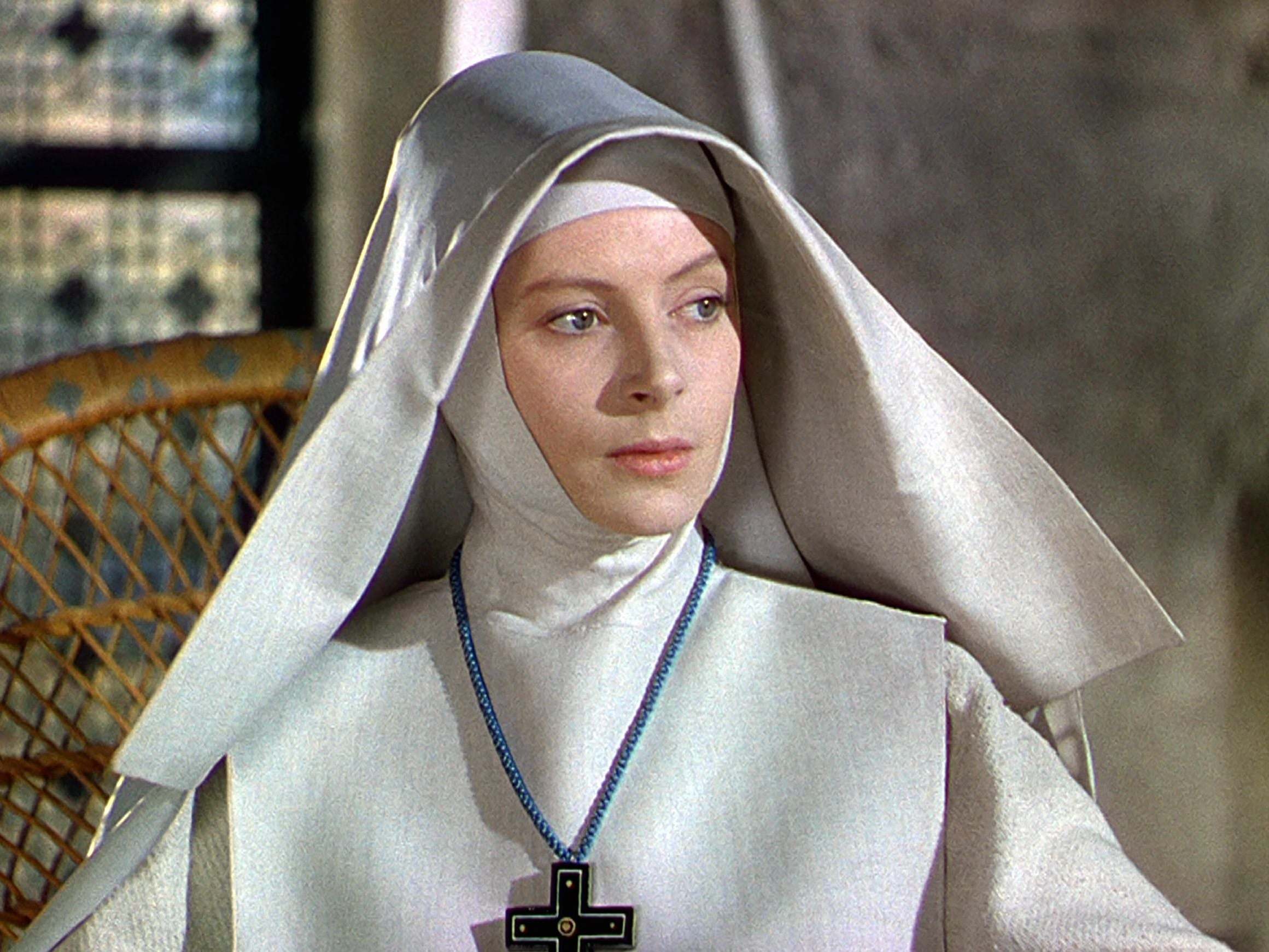The Indy Film Club: How Black Narcissus heralded the slow death of the British Empire
In Powell and Pressburger’s exploration of eroticism and sexual repression, western values are seen to crumble in the face of the slightest challenge, writes Clarisse Loughrey


Occasionally, cinema offers an image so provocative, it burns right through the screen. In the 1947 classic Black Narcissus it’s the sight of a pair of lips being painted in garish red. They belong to Ruth (an electric Kathleen Byron), a nun who has rejected her vows in favour of lust and madness. Her habit has been traded for a bewitching, crimson-coloured dress. Her hair is pristinely coiffed. But she looks pale and feverish, a sign either of infection or demonic possession.
One of the great gifts of Michael Powell and Eric Pressburger, known as The Archers, was their ability to encapsulate each film in a single image. In 1948’s The Red Shoes, it’s the moment Moira Shearer’s ballet dancer clasps the side of her head in wild, sweaty desperation – she’s a woman torn between love and art. All of Black Narcissus can be contained within Ruth’s lipstick tube, with its exotic promises of sexual liberation. Today, the film plays as a gorgeous, scintillating melodrama. But for Britain in the late Forties, rife with repression and postwar trauma, it was nothing less than explosive.
Based on a novel by Rumer Godden, the film follows a handful of Anglican nuns on an abortive mission to found a convent high up in the Himalayas, in a palace once used to house the local ruler’s harem. Powell, who did the majority of the directing, chose not to film on location in India, but at London’s Pinewood Studios, with a handful of scenes shot in the west Sussex garden of an Indian army retiree. Matt paintings were used instead, meaning the mountain ranges were all rendered on large sheets of glass. Still, Powell received letters from people who were convinced they’d travelled to the exact locations in the film.
Cinematographer Jack Cardiff, who won an Oscar for his work on the film, was free to create any colour palette he liked: the Calcutta nunnery where the film starts off features chalky white walls and simple furniture. But the palace is a haven for seduction. There are shadowy passages and murals of nude, writhing women. The more ostentatious locals dress in bright silks, trinkets and jewels. When Ruth’s madness takes centre stage, the sky shifts into more hellish hues. Powell shot the film in Technicolour, which at the time had really only been used for epics and musicals – certainly not for a drama on this intimate a scale.
The film’s title refers to the perfume worn by the Young General (Sabu), who oversees the convent’s activities and eagerly hopes they will educate him in western culture. And it’s that heady, masculine aroma that envelopes these women, despite the fact they’ve travelled to this remote place in order to shield themselves away from such temptations. Then there’s Mr Dean (David Farrar), the general’s agent – a self-satisfied, cynical man with thick hair on his chest and a tendency to walk around in nothing but short shorts.
“There’s something the atmosphere which makes everything seem exaggerated,” Mr Dean observes. The air is clear, the water is good and sometimes the sounds of ritual drumming float up from the village below. The nuns can’t seem to bear it. The mother superior, Sister Clodagh (Deborah Kerr), is haunted by memories of the doomed love affair that drove her to take the cloth. We see it in brief flashbacks, where Kerr’s sharp, thin features melt into dreamlike serenity – it’s one of her greatest performances. Sister Philippa (Flora Robson) works in the garden until her hands are covered with blisters, but nothing can distract her from a similar desire to revisit the past. She ignores the order to plant vegetables. Soon the place is teeming with flowers. And then there’s Ruth, who arrives at the convent already ladened with strange illnesses. After Mr Dean shows her a simple kindness, she responds with full-blooded sexual obsession. When he shows the same to Sister Clodagh, that obsession turns into violent jealousy. The floodgates have finally opened on all their self-imposed sexual repression. It’s a deluge of biblical proportions.
Black Narcissus’s power has been soured by its use of brownface, particularly in the casting of white actress Jean Simmons as Kanchi, a flirtatious local girl. The film also leans heavily into Orientalism, with all its stereotypes of softness and sensuality. But there’s a deep cynicism towards the nuns’ ability to impose their moral codes and proclivities on a foreign people. What lies beneath their superficial kindness is something more sinister: see how they teach the village children English using symbols of oppression (“warship”, “bayonet”, “dagger”, “gun”). Not only is their enterprise a failure, but their own beliefs crumble like sand the moment they’re faced with something truly new and alien to them. Black Narcissus was surprisingly prescient – the year it was released, India achieved independence from British rule.
The film wasn’t particularly popular with British critics – it was a melodrama in an era when kitchen sink realism was king. Sight & Sound called it an outright “disappointment”. Americans fared better with it, though the Catholic National Legion of Decency declared it a “perverted specimen of bad taste”. The version shown to US audiences had Sister Clodagh’s flashbacks and several lines of suggestive dialogue edited out. But those things only further cemented Black Narcissus’s status as a daring piece of work. When Ruth appears in the palace’s doorway, gaunt and wraith-like, with hatred in her eyes, it can still send shivers down your spine.
Join our commenting forum
Join thought-provoking conversations, follow other Independent readers and see their replies
Comments